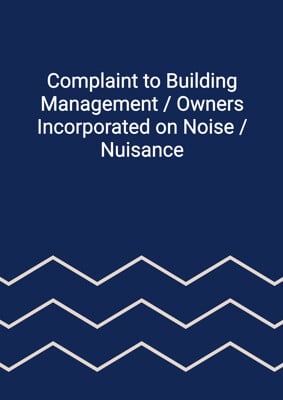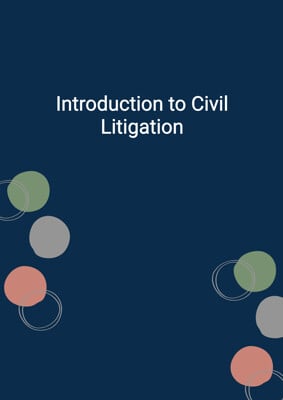How to Tailor the Document for Your Need?
01
Create Document
Click "Create Document" button and the document will be prepared with your account details automatically filled in.
02
Fill Information
Please fill in any additional information by following the step-by-step guide on the left hand side of the preview document and click the "Next" button.
03
Get Document
When you are done, click the "Get Document" button and you can download the document in Word or PDF format.
04
Review Document
Please review the document carefully and make any final modifications to ensure that the details are correct before publication / distribution.
Document Preview
Document Description
The document titled 'Introduction to Alternative Dispute Resolution and Sample Clauses' provides a comprehensive guide on the use of dispute resolution and arbitration clauses in contract law. It is important to understand that this document serves as a guide and does not constitute legal advice. As each jurisdiction may have different laws and regulations, it is recommended to consult with a local lawyer for specific advice.
The document begins with an introduction to alternative dispute resolution (ADR) and its significance in resolving disputes. ADR is a voluntary and private process where parties appoint a neutral third party to assist them in settling or resolving their dispute. The two most commonly used forms of ADR are mediation and arbitration.
Arbitration is a procedure where a dispute is submitted to one or more arbitrators who make a binding decision. It is often chosen as an alternative to court litigation, especially in commercial disputes and international transactions. The document highlights the International Chamber of Commerce (ICC) and the London Court of International Arbitration (LCIA) as widely used arbitral institutions in Europe, while the Hong Kong International Arbitration Centre (HKIAC) and the Singapore International Arbitration Centre (SIAC) are preferred in Asia. Additionally, the document mentions the UNCITRAL arbitration rules as a well-known ad hoc option.
Mediation, on the other hand, is a negotiation facilitated by a neutral third party. Unlike arbitration, mediators do not make decisions or issue orders. They assist parties in reaching a settlement by facilitating communication, obtaining relevant information, and developing options. Mediation is commonly used in personal or family disputes.
The document also provides sample clauses for arbitration and alternative dispute resolution. The arbitration clauses include provisions for ICC arbitration, LCIA/HKIAC/SIAC arbitration, UNCITRAL arbitration, and an ad hoc clause. Each clause specifies the rules, number of arbitrators, seat of arbitration, language, and procedural matters. The alternative dispute resolution clause outlines a procedure for resolving disputes through negotiation and ADR before resorting to arbitration.
Overall, this document serves as a comprehensive guide to understanding alternative dispute resolution and provides sample clauses for incorporating into contracts.
How to use this document?
Step-by-step guidance for using the document:
1. Understand the importance of alternative dispute resolution (ADR) in resolving disputes efficiently and avoiding protracted litigation.
2. Determine the jurisdiction and consult with a local lawyer to ensure compliance with applicable laws and regulations.
3. Assess the nature of the dispute and decide whether arbitration or mediation is more suitable.
4. If arbitration is chosen, consider the preferred arbitral institution based on the region and type of dispute.
5. Select the appropriate arbitration clause from the sample clauses provided, such as ICC arbitration, LCIA/HKIAC/SIAC arbitration, UNCITRAL arbitration, or the ad hoc clause.
6. Customize the chosen arbitration clause by specifying the number of arbitrators, seat of arbitration, and language.
7. If mediation is preferred, understand the role of mediators in facilitating negotiations and reaching a settlement.
8. Consider incorporating the alternative dispute resolution clause into contracts to encourage negotiation and ADR before resorting to arbitration.
9. Familiarize yourself with the procedural matters outlined in the chosen clause, such as language, preliminary issues, hearings, and timeframes.
10. Ensure that both parties agree to the chosen dispute resolution method and the specific clauses included in the contract.
11. Keep in mind that the costs and fees associated with ADR procedures should be borne equally by the parties.
12. If the dispute remains unresolved through negotiation and ADR, follow the procedure outlined in the alternative dispute resolution clause to initiate arbitration.
13. Adhere to the rules and guidelines set forth in the chosen arbitration clause throughout the arbitration process.
14. Respect any decisions or awards made by the arbitrators and comply with the resolution reached.
15. Remember that any statements or admissions made during the ADR procedure should not be used or relied upon in the arbitration process.
16. Seek legal advice and guidance as needed throughout the dispute resolution process to ensure compliance and protect your rights and interests.












